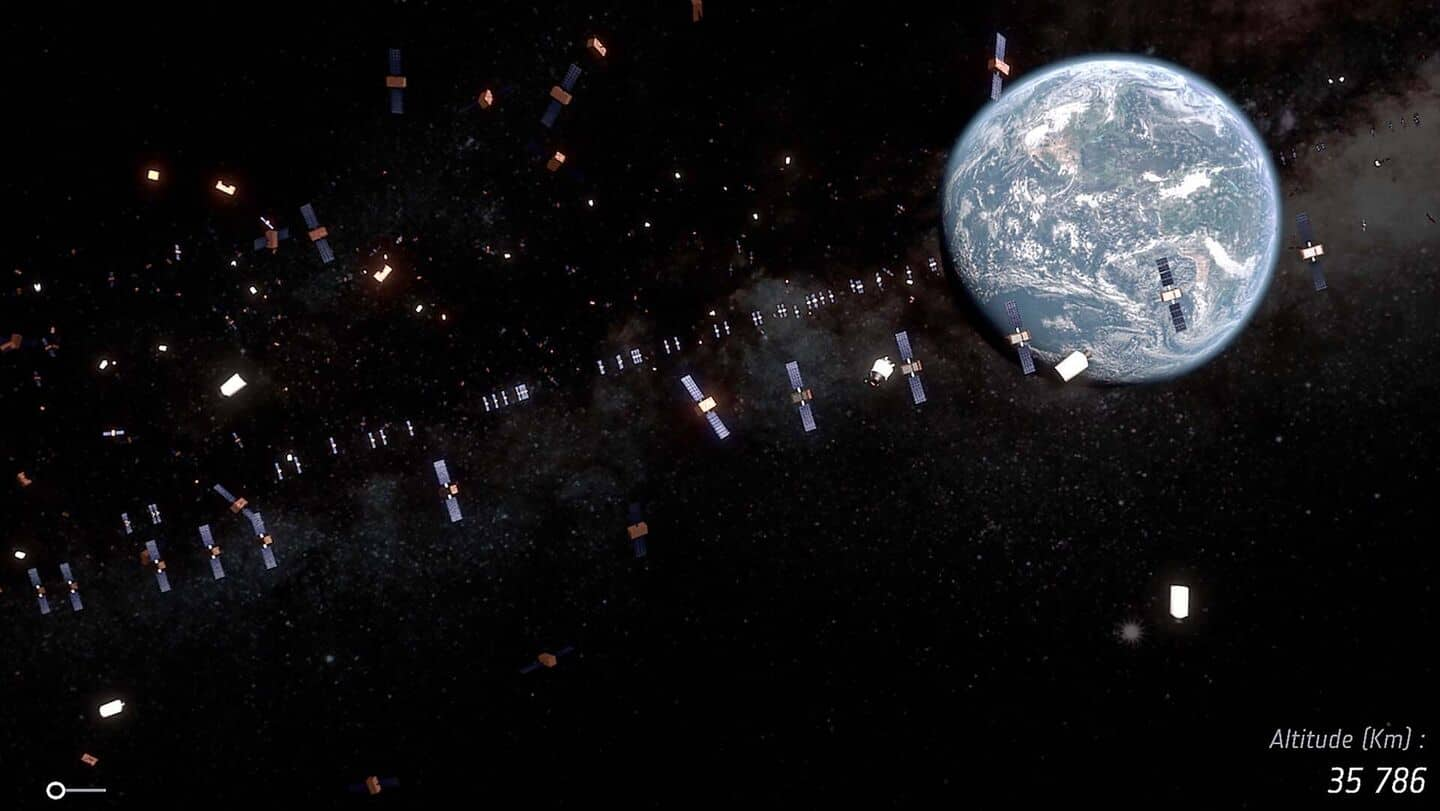
Scientists warn of space jam as satellite count exceeds 11,700
What's the story
Earth is currently home to more than 11,700 active satellites, and the number is growing at an unprecedented rate. In 2024 alone, over 2,800 satellites were launched—roughly one every 34 hours. This orbital boom isn't just a government affair; private space companies are leading the charge with Elon Musk's SpaceX at the forefront. The primary concern is the growing risk of satellite collisions and the resulting debris.
Satellite surge
Thousands of satellites from a handful of companies
SpaceX's ambitious Starlink program has already launched over 7,400 satellites, nearly 60% of all active satellites in orbit. The boom is largely driven by "mega constellations"—huge networks of satellites meant to provide global internet and communication services. Other major players in this orbital broadband race include Amazon's Project Kuiper, UK-based OneWeb, and several rapidly expanding Chinese companies.
Orbital challenges
LEO has a 'carrying capacity'
The rapid increase in satellites has raised serious concerns about space sustainability. The most affected region is low-Earth orbit (LEO), the atmospheric layer up to 2,000km above Earth's surface. Scientists warn that LEO has a "carrying capacity," a limit beyond which safe satellite operations become difficult due to congestion and collision risks. This number is estimated at around 100,000 active satellites.
Satellite count
Total satellite population already nearing 15,000
Harvard-Smithsonian Center for Astrophysics astronomer Jonathan McDowell estimates the total satellite population, including inactive or defunct units, has already reached around 14,900. And with more commercial players joining the space race, this number is expected to skyrocket. Experts say at current launch rates, the threshold of LEO could be reached well before 2050.
Implications
Collision risk rises with growing satellite mega‑constellations
A single collision can produce countless fragments, triggering a cascade of orbital debris—a phenomenon termed the Kessler Syndrome. Space experts note this domino effect could render parts of orbit unusable, disturbing essential satellite services like GPS, weather forecasting, and global communications. Beyond collisions, experts warn of radio interference and light pollution. Dense satellite bands hinder astronomical observations, compromising optical and radio telescopes worldwide. Observatories experience streaks of reflected light and signal noise as satellite constellations expand.